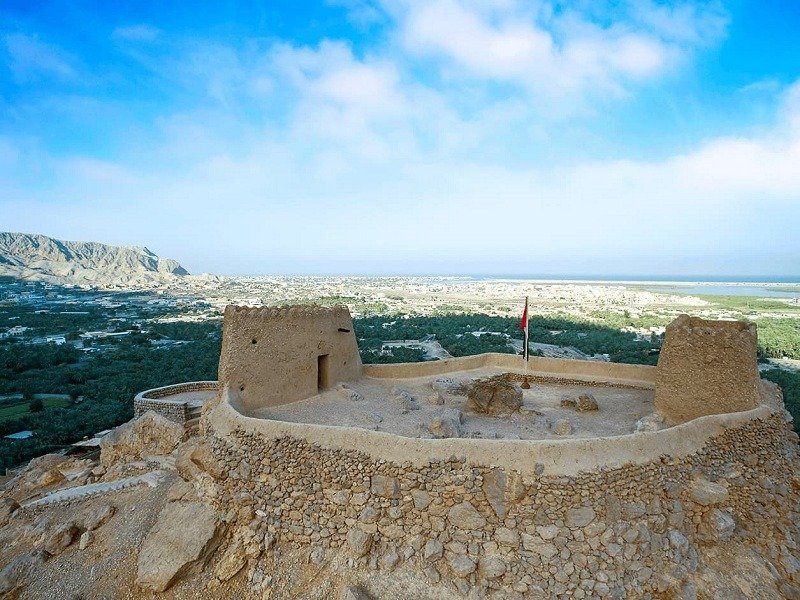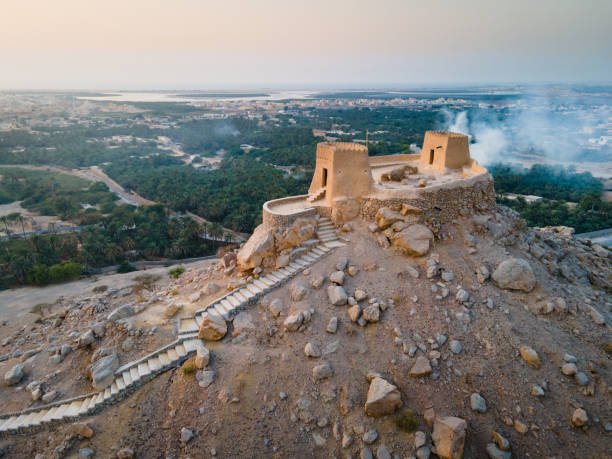Ras Al Khaimah, one of the UAE’s most scenic emirates, is attracting more visitors than ever before. Its rich history, vibrant culture, and stunning landscapes are drawing tourists to explore its historic sites. In recent years, the number of visitors has surged, with historic landmarks playing a significant role in the emirate’s growing tourism industry.
The Rise of Cultural Tourism
Ras Al Khaimah has long been known for its natural beauty and serene landscapes. However, in recent years, it has increasingly positioned itself as a cultural and historical destination. The emirate is home to numerous sites that reflect the region’s fascinating past, from ancient forts to archaeological sites. These historic landmarks are not only attracting history enthusiasts but also those interested in authentic cultural experiences.
The growth in cultural tourism is a direct result of Ras Al Khaimah’s efforts to promote its heritage. The government has invested in restoring and preserving historical sites to make them accessible to tourists. These initiatives, combined with the increasing global interest in the UAE’s rich culture, have led to the current record-breaking visitor numbers.

Top Historic Sites to Visit in Ras Al Khaimah

- Dhayah Fort
One of the most iconic landmarks in Ras Al Khaimah, Dhayah Fort has been attracting visitors for its historical significance and panoramic views of the surrounding desert and mountains. Built in the 16th century, this fort played a key role during various battles in the region’s history. Today, visitors can explore the fort’s ancient walls, climb its towers, and learn about the emirate’s role in the region’s strategic history. - Al Jazirat Al Hamra
Known as the “Ghost Village,” Al Jazirat Al Hamra offers a unique glimpse into Ras Al Khaimah’s past. This abandoned fishing village was once home to prosperous pearl divers and fishermen. Visitors can walk through its old houses and explore the remnants of the past, giving them a fascinating insight into the traditional way of life in the UAE before modern development. - Ras Al Khaimah National Museum
Housed in a former royal palace, the Ras Al Khaimah National Museum showcases the rich history of the emirate. With exhibits ranging from archaeological finds to traditional artifacts, the museum offers visitors a chance to learn about the region’s prehistoric past and its development over the centuries. It’s one of the most visited cultural sites in the emirate. - Jebel Jais
While Jebel Jais is primarily known for its stunning natural beauty and the world’s longest zipline, it is also home to some fascinating historical features. Evidence of ancient settlements can be found on the mountain, making it a perfect spot for those interested in both nature and history.
The Impact of Tourism on the Local Economy
The increasing number of visitors to Ras Al Khaimah’s historic sites is having a positive impact on the local economy. The tourism industry is a significant contributor to the emirate’s GDP, and the rise in visitors to cultural sites is helping boost sectors such as hospitality, retail, and transportation.

Local businesses, particularly in the hospitality industry, have seen increased demand, as tourists look for accommodation and dining options close to historic attractions. Moreover, the influx of tourists has created new job opportunities, particularly in areas related to tourism and hospitality services. With more people visiting the region, the government is also investing in infrastructure, ensuring that Ras Al Khaimah can accommodate the growing number of tourists while preserving its historic sites.

The Future of Ras Al Khaimah’s Historic Tourism
Looking forward, Ras Al Khaimah plans to continue its focus on cultural tourism. The government has announced several initiatives to further develop the region’s historical attractions and make them even more accessible to visitors. These initiatives include new guided tours, interactive experiences, and expanded facilities at key sites.
One of the key focuses for the future will be sustainability. As tourism to historic sites increases, maintaining the integrity of these landmarks is vital. Efforts are being made to ensure that conservation practices are in place to protect these sites for future generations. Moreover, there will be an emphasis on educating tourists about the significance of these sites and encouraging respectful visitation practices.
Conclusion
Ras Al Khaimah’s historic sites have never been more popular. With increasing numbers of visitors flocking to the emirate to explore its rich history, the tourism sector continues to grow. From ancient forts to ghost villages, Ras Al Khaimah’s heritage offers something for everyone, and the rise in tourism is only set to continue. As the emirate continues to invest in its historic sites and expand its tourism offerings, Ras Al Khaimah is firmly establishing itself as a must-visit destination for those seeking both adventure and a deeper connection to the UAE’s past.
Also read: Ras Al Khaimah to Expand Its Beachfront Resorts with New Luxury Properties














